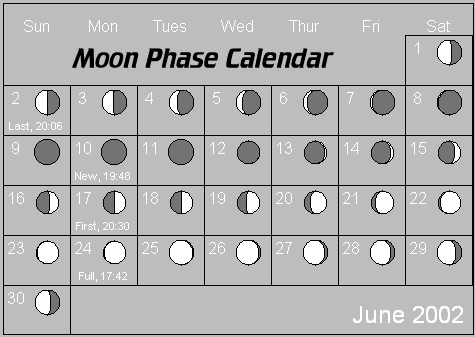



Print Large Sky Charts For 10 p.m. EDT: NORTH | EAST | SOUTH | WEST | ZENITH
![[Moon Phases]](../moonphases/2002-06-phases.jpg) |
|---|
![]() JUNE 9, 2002:
Digital Revolution
JUNE 9, 2002:
Digital Revolution
![[Digital Revolution]](6-02-E20N-290.jpg)
The Digital Revolution is Here: In just a few years low light digital photography has gone from Okay to spectacular. The photo on the right was made with a one-year old Kodak 290 in 2001, while the image on the left was shot with a new Olympus E20N in May 2002. Gary A. Becker photos...
![[Digital Revolution]](6-02-fajada.jpg)
Strange Landscape: The most prominent geographical feature in Chaco Culture National Historical Park, near Nageezi, NM is Fajada Butte. Here it is seen under the light of a waxing gibbous moon in this 60 second digital image taken with an Olympus E60N camera. The small triangle of stars above and slightly to the left of Fajada represents the head of Lupus, the Wolf, a constellation that is unseen from the hazier, more northern skies of the Middle Atlantic states. Gary A. Becker photo...
![]() JUNE 16, 2002:
Witnessing Summer
JUNE 16, 2002:
Witnessing Summer
![]() JUNE 23, 2002:
Astronomy Along I-40
JUNE 23, 2002:
Astronomy Along I-40
![]() JUNE 30, 2002:
Touching the Sky
JUNE 30, 2002:
Touching the Sky

